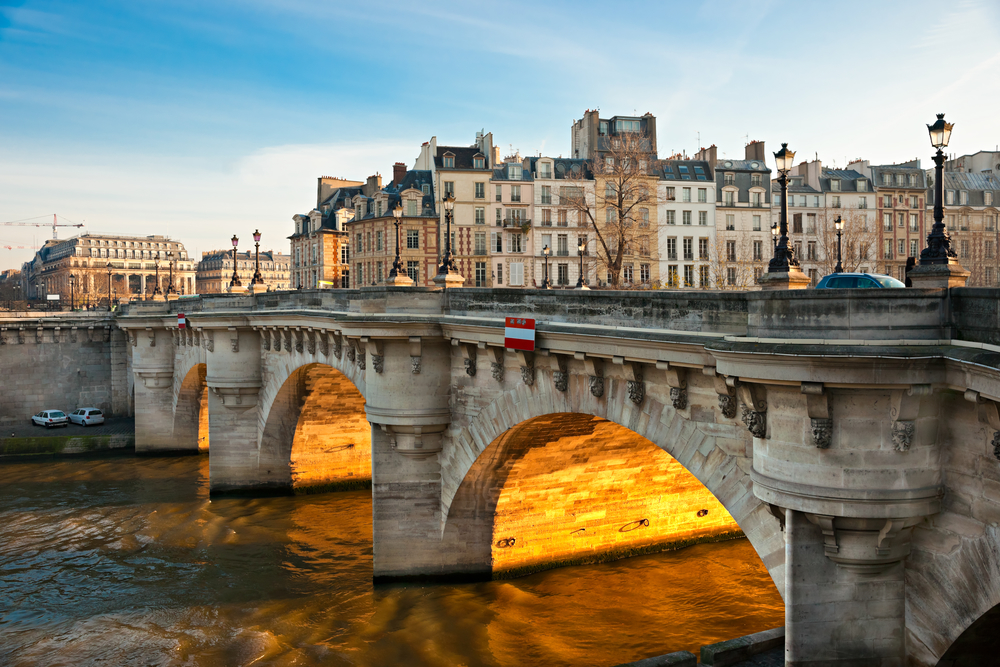
Over the next month, France is hosting the eighth ever FIFA Women’s World Cup. This international football championship will bring out more than a million ticket holders to 52 matches in nine cities across the country. While France is already a bucket-list destination year round, the next four weeks promise a special experience for locals and travelers alike. Why not plan a trip to witness it yourself?
There’s plenty to do in la République, from packing the stadiums to exploring the picturesque countryside. However, with hundreds of thousands of other visitors, you’ll want to be selective about how you spend your time. You don’t want to waste hours standing in excessively crowded lines or falling into the inevitable tourist traps.
A Note on Safety
France is relatively safer than the U.S. with crime rates on par with greater Europe. But the high-profile tournament is bound to increase the risk of pickpocketing and other theft in congested areas. Be careful around hotspots like the Eiffel Tower, Louvre Museum, Palace of Versailles, Porte de Clignancourt flea market, Côte d’Azur, Mont Saint-Michel, and others. Keep your valuables secure at all times, stick to well-lit walkways, and avoid deserted areas at night. Luckily, with so many other FIFA fans around, that shouldn’t be too difficult.
As you go from match to match, here are each city’s must-see attractions to add to your itinerary:
Paris
If you’re not watching the games from inside the Parc des Princes stadium, head to the FIFA Fan Experience Village inside the Les Halles district’s Jardin Nelson Mandela. Join an expected 10,000 others to watch the matches live on large screens, participate in writing and e-sport gaming workshops, and see hip-hop performances from the on-site cultural venue La Place.
Outside of sports, June is a busy time to take in the City of Lights. You can check out the Grandes Eaux Musicales, an annual musical fountain show in the gardens of the Château de Versailles. From June 18-25, movie fans can attend the Champs-Elysées Film Festival along the “world’s most beautiful avenue.” During the weekend of June 21, the annual Solidays music festival will bring 150+ artists to the Longchamp Racecourse, including headliners Macklemore, Suprême NTM, Angèle, and more.
If you need some peace and quiet, check out the new exhibits at the Musée de l’Orangerie, Musée d’Orsay, Pompidou Centre, and Grand Palais. Be sure to stroll along the banks of the Parc Rives de Seine, the Canal Saint-Martin, and the Bassin de la Villette for a little fresh air, too.
 Rennes
Rennes
In northwest France, the capital city of Brittany is known for its half-timbered, 18th-century houses, idyllic greenery, and medieval heritage sites. Beyond the matches at Roazhon Park, you’ll want to explore the historic Portes Mordelaises, Duchesne Tower, and Place du Parlement-de-Bretagne of Old Town. The Parc du Thabor offers a naturesque escape with French, English, rose, and botanic gardens to walk through. For some local produce, stop by the Lices market on Saturday mornings to sample Breton cider, salted butter, and Reinette apples.
To truly get a feel for the city, wait for the Tombées de la Nuit, an annual outdoor summer festival celebrating arts and culture, starting July 3. It’ll be easy to see why Rennes was voted the best place to live in France for foreigners.
La Havre
Located where the Seine river meets the English Channel, Le Havre is the second busiest port in France. It’s a green city of modernism and contemporary architecture — largely due to the fact that it was completely rebuilt by the Belgian architect Auguste Perret after being bombed in World War II. Its many open spaces worth visiting include the Forest of Montgeon, Rouelles Park, Graville Abbey, and the Hanging Gardens. Try out some of the best shopping and dining options at the Vauban Docks before you make the required trip at the city’s world-renowned Museum of Modern Art.
Reims
This city is the unofficial capital of the Champagne wine-growing region — so your non-World Cup plans should be obvious. Plan at least a day to tour the world-famous Champagne cellars, caves, and vineyards, and taste some of France’s best bubbly.
A visit to Reims wouldn’t be complete without going to the Notre-Dame de Reims, a stunning Gothic cathedral that’s more than 800 years old. Formerly the place of coronation for French kings, it became an UNESCO World Heritage Site in 1991. Stop by the front of the cathedral on summer evenings for a free, 25-minute sound-and-light show to better envision how the building might have looked in medieval times.
Valenciennes
Just shy of the Belgian border, this northern commune is the smallest host city of this year’s Women’s World Cup. However, it boasts a strong history of producing painters, sculptors, and architects over hundreds of years, giving it the nickname “Athens of the North.” Take some time to relax while you’re in Valenciennes, and leisurely explore the Baroque architecture and historic landmarks of Musée des Beaux-Arts, Fosse Dutemple, Watteau Monument, Centre Place d’Armes, Église Saint-Géry, Basilique Saint-Cordon, and Médiathèque Simone Veil.
Grenoble
The “Capital of the Alps” sits at the foot of three mountain chains; however, it’s surprisingly the flattest city in France. That means World Cup fans can stretch their legs and easily explore this destination by foot. Beyond Stade des Alpes and the Village FIFA Fan Experience in the Forum des Halles shopping center, amble through Vielle Ville (Old Town), Cathédrale Notre-Dame, the Stendhal Museum, the Museum of Grenoble, and the Jardin des Dauphins. End your visit with a ride up to to the Bastille fort in “the bubbles,” or the city’s urban cable cars.
Nice
This stunning seaside location allows for a perfect retreat from the sweaty fan sections and bustling sports bars of the World’s Cup. Enjoy more than 4 miles of pebbly beaches along the Promenade des Anglais of the French Riviera. On the east side, visit the famed flower market of the historic quarter before moving into the narrow, Mediterranean-like streets of the Old City. Of its museums and monuments, Musée Matisse, Musée Marc Chagall, and MAMAC are all worth a visit.
Montpellier
The chic and sunny city will become even more energetic during the 2019 Women’s World Cup. Montpellier is known as France’s leading sports city and third-largest student city with three major universities. From its white-sand beaches to its grand hôtels particuliers (private mansions), visitors can explore its seven lively neighborhoods to see centuries of architecture, character, and style blended together. Be sure to see some of France’s finest collections of European art at the Musée Fabre, the Trois Grâces fountain at the Place de la Comédie, and the Porte de Peyrou.
Lyon
Nearly 200,000 fans are projected to swell the capital city of the Auvergne-Rhône-Alpes region for the tournament’s final matches. It’s no stranger to tourism, though — Lyon is the second most-popular tourist destination in France after Paris. Bring your appetite, because this city is also the gastronomic capital of the country. In between stops at the Place Bellecour, Notre Dame de Fourvière, Cathedral Saint Jean, and Museum of Fine Arts, make a few reservations for the city’s 20 Michelin-starred restaurants or “bouchons.”
Hopefully, these destinations make the 2019 FIFA Women’s World Cup sound even more travel-worthy. Whether it’s just for a few matches or the entire tournament, Swift Passport & Visa Services can help you renew your passport and secure a visa to make your World Cup trip to France a reality.

